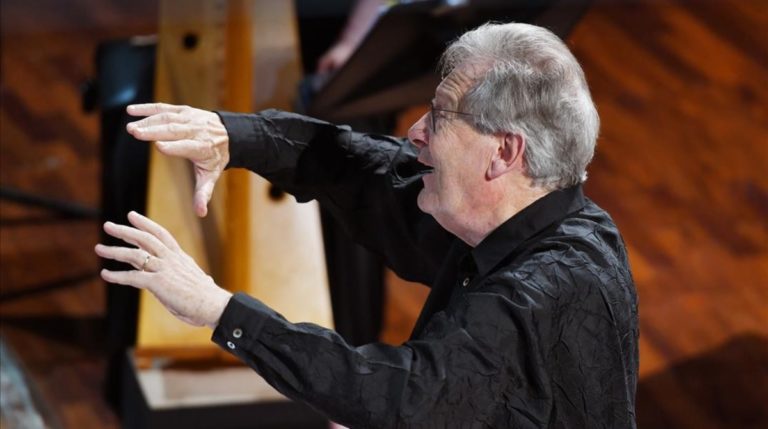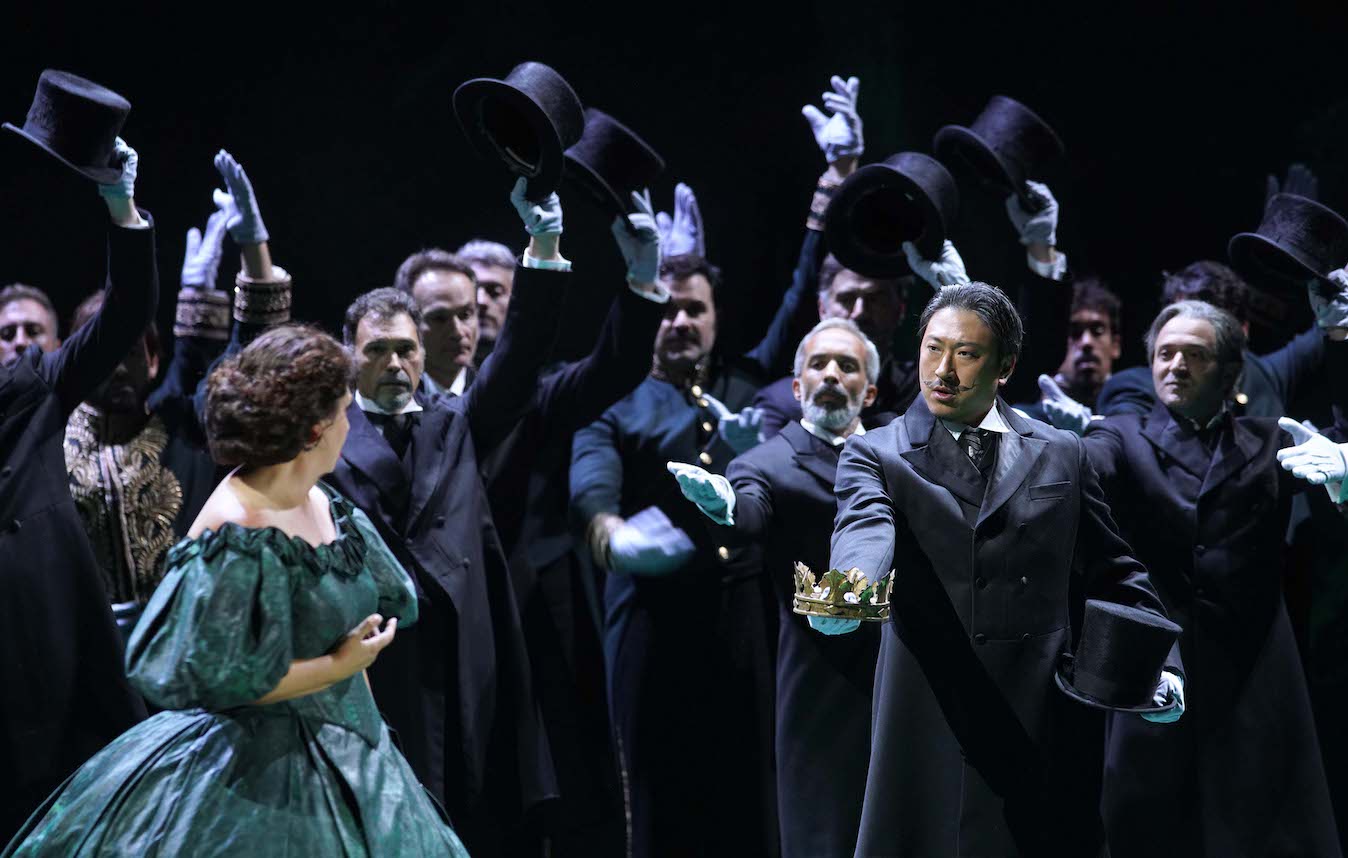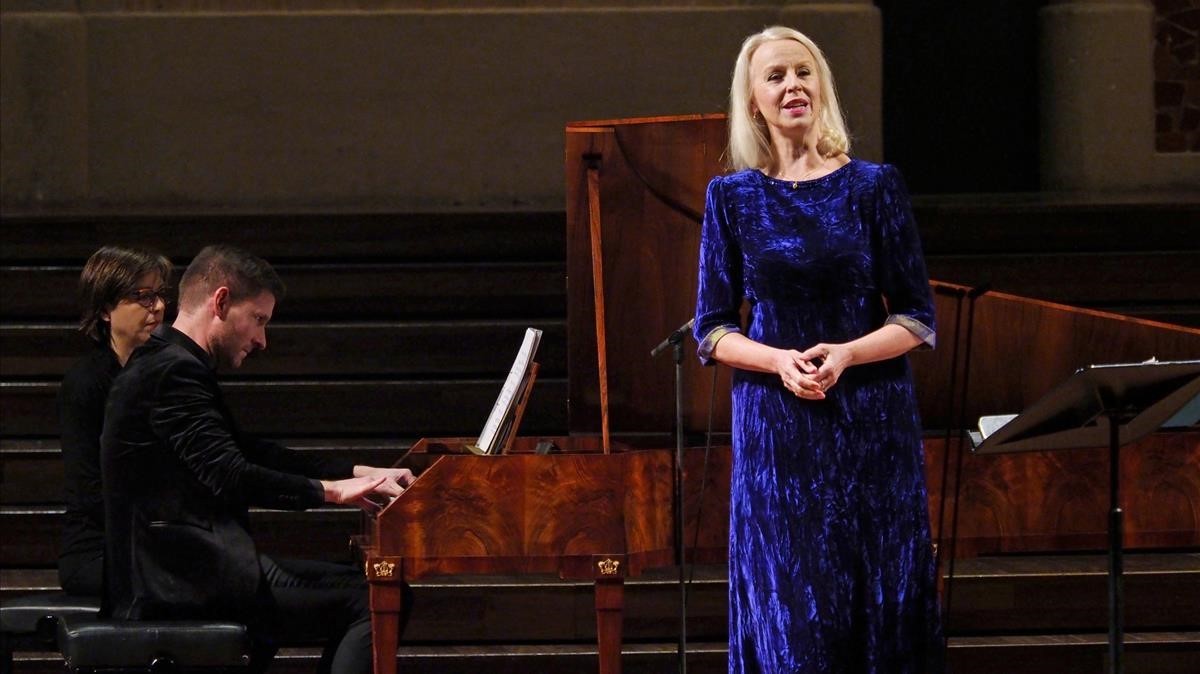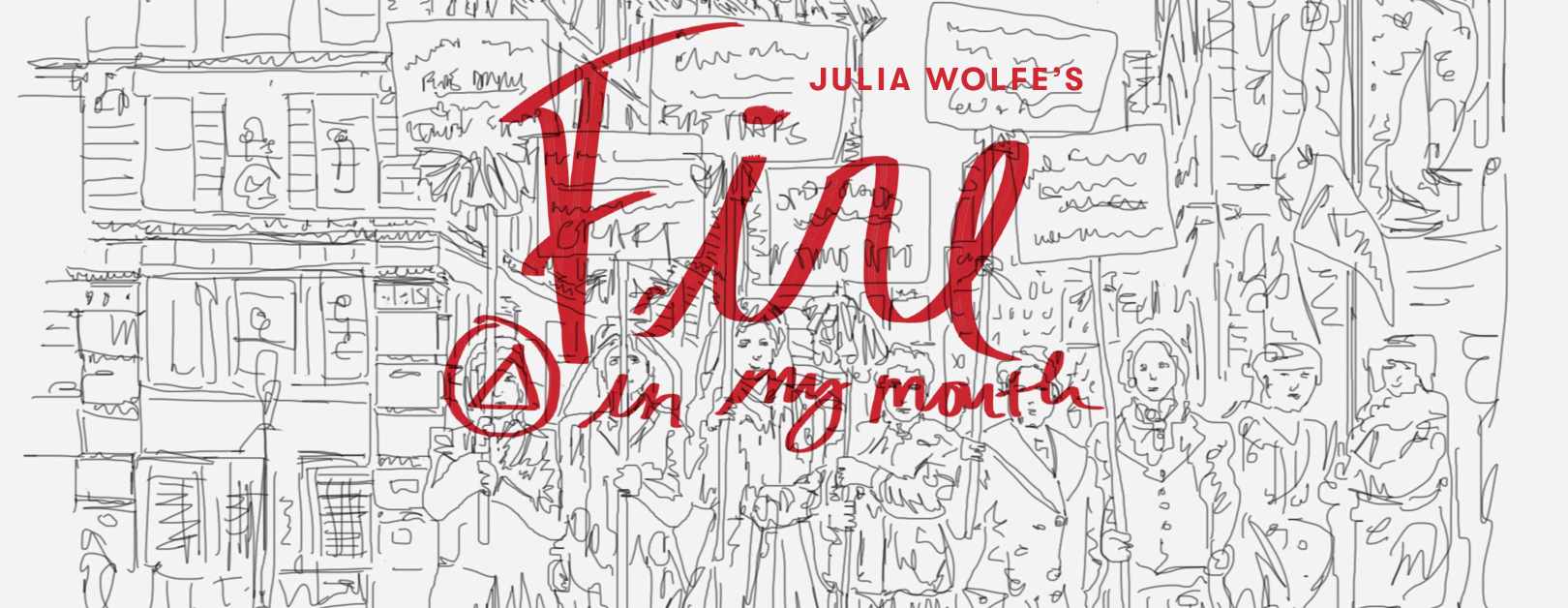
Julia Wolfe’s Fire in my mouth
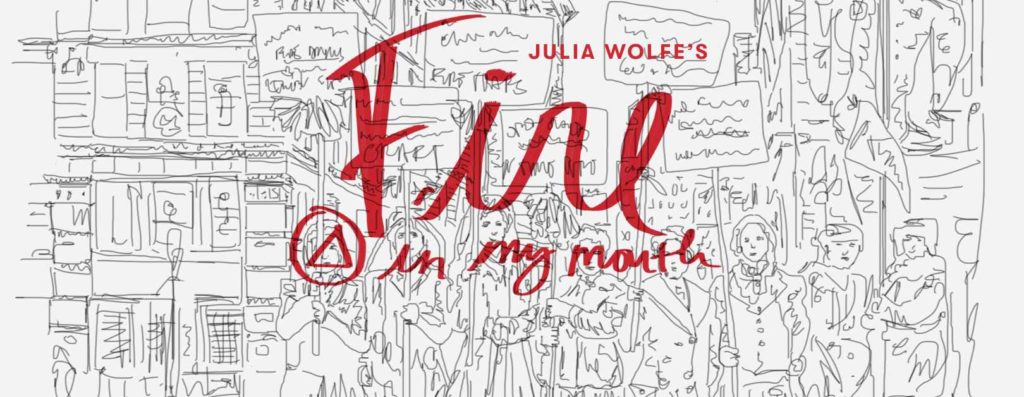
By LAURA JOBIN-ACOSTA JAN. 25, 2019
There is something to be said for the victims of the Triangle Shirtwaist Factory fire, and tonight, it was exclaimed. With the union of the women of The Crossing chamber choir, the girls of the Young People’s Chorus of New York, and the New York Philharmonic, Wolfe brought the forgotten tragedy to the forefront of the souls of a packed house.
The energy was bustling on this Friday night at Lincoln Center. There is nothing like a world premiere to get new-music musicians and music lovers excited in New York. The opening pieces included Steven Stucky’s Elegy, 1964, and Aaron Copland’s Concerto for Clarinet and String Orchestra, with Harp and Piano. The programming of the concert was that of an American intrigue. The combination of Stucky’s atmosphere of conflict, and Copland’s idealistic Americana set up an ambience of some of the emotional history of our country. Tenderly performed, New York Philharmonic’s Anthony McGill serenaded us with Copland’s counterbalanced exploration, and was responded to with a standing ovation.
On March 25th, 1911, the lives of one hundred and forty six garment workers were lost in a factory building on Washington Place in downtown New York. The victims were mostly immigrant women from Eastern Europe and Southern Italy. In intolerable working conditions, they persevered against neglect, but due to the doors in their building being locked to prevent unauthorized breaks, they faced their tragic death after a fire broke out. The lives of many women and children were stolen that day, and their experience is something New Yorkers still shudder at. The tragedy brought attention to the safety standards of work environments, which instigated legal improvement. The building, which has since been renovated, is now owned by New York University.
Pulitzer Prize winning composer Julia Wolfe, largely known as a founder of Bang on a Can, an association dedicated to new music, is also a composition professor at New York University’s Steinhardt School of Music.
With a minimalist style, Wolfe’s compositional voice was unique within the evocative oratorio. The pulse of the piece kept the motion moving forward, as the emotional journey danced along within it. Through a multi-medium platform, emotions seemed to be expanded, almost like taking an emotion and stretching it across a spectrum of sound, words, and visuals. At any point, a listener could find that a passage of words they had noticed suddenly become atmospheric, and that the visuals on the screen had become more enlivened. She was able to incorporate the rawness of folk song with the pulse of modern minimalism, in vivid duality, almost like a depiction of how a soul sounds on earth alongside how it sounds in the heavens.
Completely with costumes and choreography, so much was said with slight movements, particularly when the children entered through the audience after an eerie ensemble of scissors were played by the women’s chorus. It was heart-wrenching, as well as utterly fascinating.
This oratorio, which is bound to be performed again, is not one to miss.

